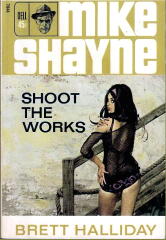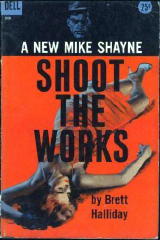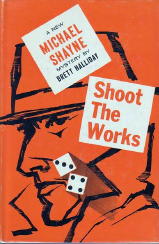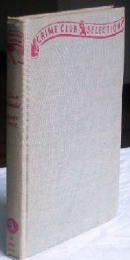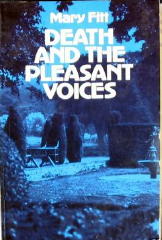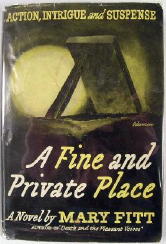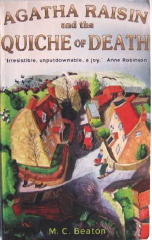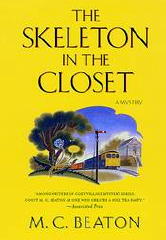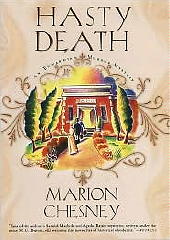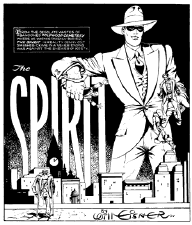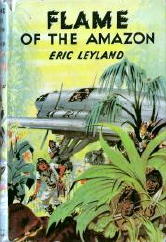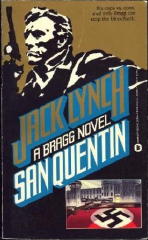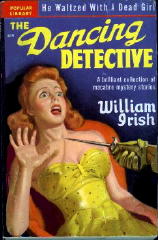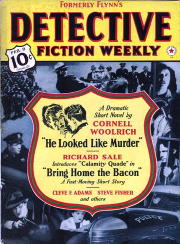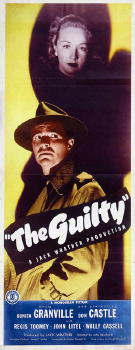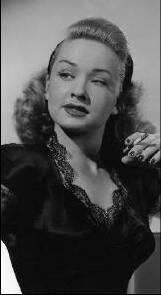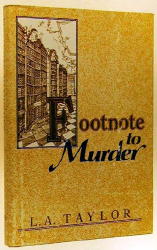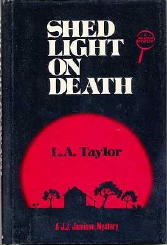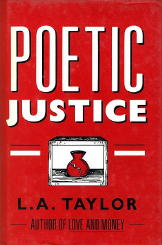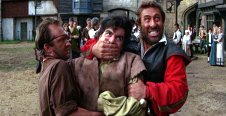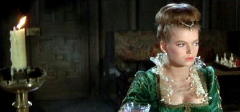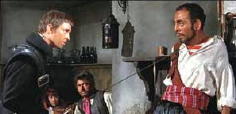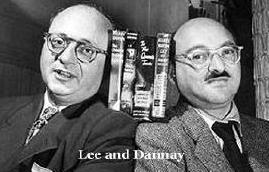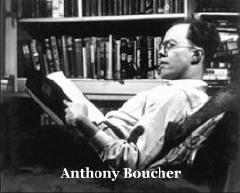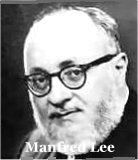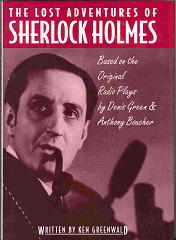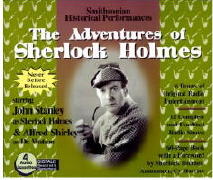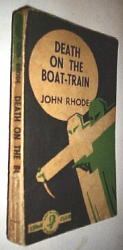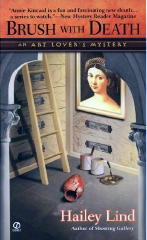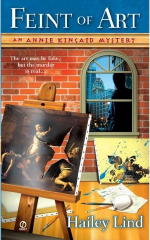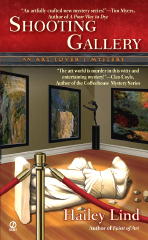MARY FITT – Mizmaze.
Penguin, UK, reprint paperback: 1961. Hardcover editions: Michael Joseph, UK, 1959; British Book Centre, US, 1959.
Perhaps it’s wrong-end-to in doing so, but I think I’ll begin this time by listing all of mysteries that Mary Fitt wrote, either under that name or her own, plus one other pen name. (I think you may be as surprised as I was at how long a list it turns out to be.)
Courtesy, then, of Crime Fiction IV, by Allen J. Hubin:
FITT, MARY. Pseudonym of Kathleen Freeman, 1897-1959; other pseudonym: Stuart Mary Wick.
Murder Mars the Tour (n.) Nicholson 1936 [Austria]
Three Sisters Flew Home (n.) Nicholson 1936 [England]
Bulls Like Death (n.) Nicholson 1937 [Berlin]
The Three Hunting Horns (n.) Nicholson 1937 [France]
Expected Death (n.) Nicholson 1938 [Supt. Mallett; England]
Sky-Rocket (n.) Nicholson 1938 [Supt. Mallett; England]
Death at Dancing Stones (n.) Nicholson 1939 [Supt. Mallett; England]
Murder of a Mouse (n.) Nicholson 1939 [Supt. Mallett; England]
Death Starts a Rumor (n.) Nicholson 1940 [Supt. Mallett; England]
Death and Mary Dazill (n.) Joseph 1941 [Supt. Mallett; England] US title: Aftermath of Murder.
Death on Herons’ Mere (n.) Joseph 1941 [Supt. Mallett; England] US title: Death Finds a Target.
Requiem for Robert (n.) Joseph 1942 [Supt. Mallett; England]
Clues to Christabel (n.) Joseph 1944 [Supt. Mallett; England]
Death and the Pleasant Voices (n.) Joseph 1946 [Supt. Mallett; England]
A Fine and Private Place (n.) Macdonald 1947 [Supt. Mallett; England]
Death and the Bright Day (n.) Macdonald 1948 [Supt. Mallett; England]
The Banquet Ceases (n.) Macdonald 1949 [Supt. Mallett; England]
Pity for Pamela (n.) Macdonald 1950 [England]
An Ill Wind (n.) Macdonald 1951 [Supt. Mallett; England]
Death and the Shortest Day (n.) Macdonald 1952 [Supt. Mallett; England]
The Night-Watchman’s Friend (n.) Macdonald 1953 [England]
Love from Elizabeth (n.) Macdonald 1954 [Supt. Mallett; England]
The Man Who Shot Birds and other tales of mystery and detection (co) Macdonald 1954 [Supt. Mallett; England]
Sweet Poison (n.) Macdonald 1956 [Supt. Mallett; England]
The Late Uncle Max (n.) Macdonald 1957 [Mediterranean Island]
Case for the Defence (n.) Macdonald 1958 [England]
Mizmaze (n.) Joseph 1959 [Supt. Mallett; England]
There Are More Ways of Killing… (n.) Joseph 1960 [England]
FREEMAN, KATHLEEN. 1897-1959. Pseudonyms: Mary Fitt & Stuart Mary Wick.
The Intruder, and other stories (co) Cape 1926
Gown and Shroud (n.) Macdonald 1947 [Academia; England]
WICK, STUART MARY. Pseudonym of Kathleen Freeman, 1897-1959; other pseudonym: Mary Fitt.
And Where’s Mr. Bellamy? (n.) Hutchinson 1948
-The Statue and the Lady (n.) Hodder 1950
Kathleen Freeman herself was a British classical scholar who attended the University College of South Wales and Monmouthshire in Cardiff, where she was appointed Lecturer in Greek in 1919, but resigning from the University in 1946.
As a writer of detective fiction, the author’s primary series character, Supt. Mallett, began his career in 1938, when the Golden Age of Detection was in full sway, and did not end until this book, Mizmaze, in 1959. Quite a career, 18 books in all, for a fictional character whom I’m sure none but the most devout aficionados remember. (The latter is a category which I unhappily confess does not include me, as this is the first book by Mary Fitt that I’ve ever read.)
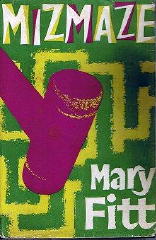
And in spite of some serious problems I found with the book, it will not be my last. Some of her mysteries were published in the US by Doubleday’s Crime Club imprint, for example, and while I have not read them, I do have them.
But get to the book itself, shall I? It’s one of those old-fashioned detective stories in which the murder takes pace (or already has taken place) in Chapter One, and there’s nothing else in the book but the solving of the crime.
Well, that and sorting through all of the relationships between the characters, some of which is relevant to the case and some of it not, but it’s all part and parcel of solving the crime, is it not?
Dead is the patriarch of the Hatley family, found with fatal head injury in the center of the maze at his home, both called Mizmaze. The murder weapon: a croquet mallet. Surviving family: two daughters, one Alethea (Lethy), who never can be relied on to tell the truth, her father’s pride and joy, the other Angela, a devilish girl who her father seems to have intensely disliked. A dysfunctional family: yes, no doubts about it.
Alethea’s former husband is also visiting upon the fatal weekend, along with his new wife, a former actress more than 30 years older than he. (The victim had much to do with the breakup of his daughter’s marriage.) Two others are possible suspects: a 6 foot 8 giant with pituitary problems, in love with Althea but Angela in love with him, plus his mother.
More than you wanted to know, I suppose. Solving the case are Superintendent Mallet and his close friend, Dr. Fitzbrown, but truth be told, it is the latter who does the bulk of the questioning of the suspects.
From the summary so far, I imagine that you already have a good grasp of the story line (and more importantly, whether or not this is a book for you.) And by the way, that the deadly blunt instrument was a mallet did not escape Fitzbrown’s attention, either. He comments on it immediately.
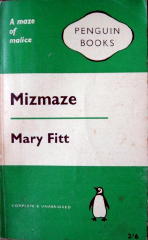
Problems, as previously alluded to: lapses in continuity in the telling. On page 23, Fitzbrown says that Hatley was followed by the killer into the maze. On page 24, he clearly states that someone with deadly intent was waiting for Hartley at or near the center of the maze.
More. On page 132 Horick (the giant) comes downstairs from his sickbed to confront the rest of the entourage. On page 143 he comes down again as if for the first time, surprised to see them all there.
There is also a previously never-mentioned spouse of one of the participants who shows up without notice at nearly the last moment, and a killer who suddenly turns into a madman (or woman) at the end, claiming responsibility and threatening to kill all of the others, the pair of sleuths included, only to fall victim himself (or herself) to a deus ex machina which is as amusing as it is fortuitous.
And there’s the key right there, only I didn’t realize it until I was done, and indeed I did finish it, flaws and all, staying up 30 minutes past my planned bedtime to do so. I’m sure it wasn’t meant to be so, but if I were to be asked about an unintentional spoof of Golden Age detective stories, right now Mizmaze would be an example that I’d point to first.
I suppose that may sound unkind. I don’t mean it to be, and so far I can’t explain my attraction to this book any better than I am. The characters are more than eccentric — you might even call them just plain looney — but they’re nonetheless real enough: devious, worried, clever, burdened down by life and love — or entirely human, in other words.
Even Dr. Fitzbrown finds one of the women attractive enough to spend a short minute with her in a kiss, even though she’s still very much a suspect — and I wonder how that turns out. The book ends abruptly with the killer’s downfall, and this is the last appearance in print of either sleuth.
[COMMENT] 08-21-08. I have discovered that I am not the only mystery fan who has struggled with Mary Fitt and her detective fiction. On the John Dickson Carr forum, I have found a long post by Xavier Lechard in which he tries to come to grips with her books. The following except should demonstrate, and still be within the bounds of fair usage:
“But did Fitt write Golden Age mysteries? As far as chronology is concerned, there isn’t a doubt about it. Stylistically, however, the matter is much more debatable. If we admit that Golden Age mysteries are about a crime and its resolution through logical reasoning by an amateur or professional detective, then we have a problem with Death and Mary Dazill which is almost devoid of any detection, as well as with Clues to Christabel which has no detective in the proper sense….”
And may I recommend Xavier’s own blog to you? Entitled At the Villa Rose, it’s jam-packed full of serious commentary and replies on the state, status and structure of the Golden Age detective story.
